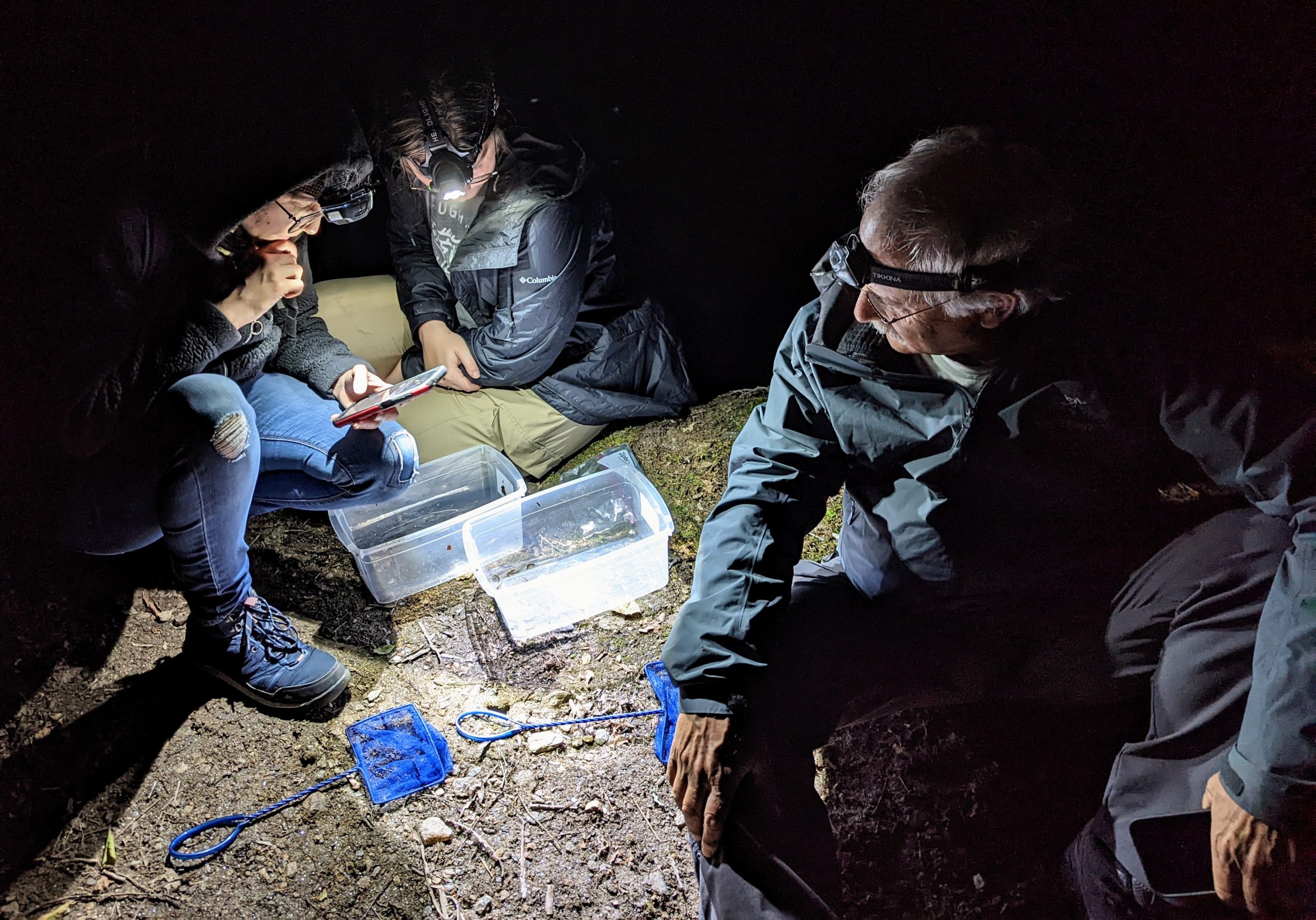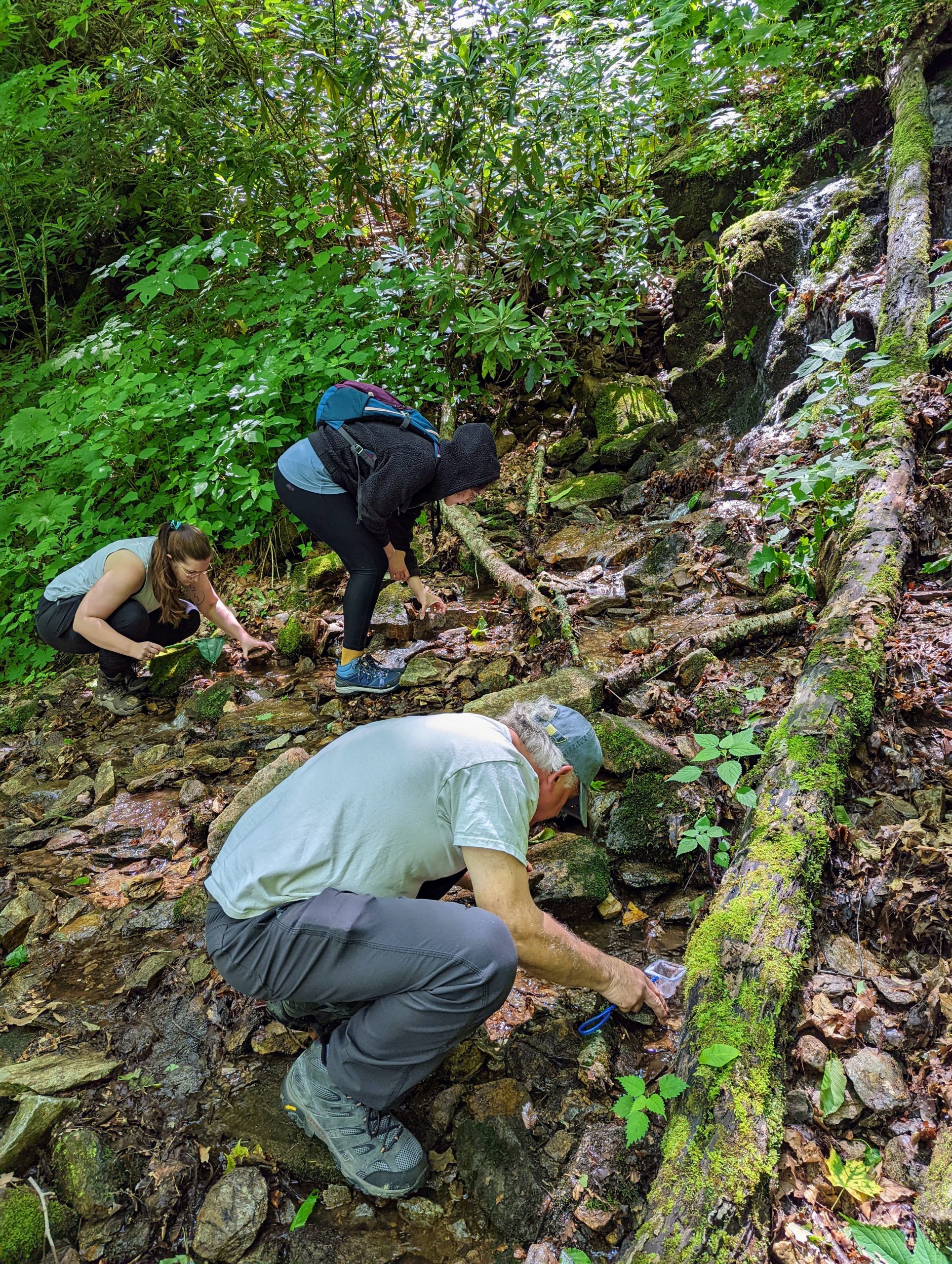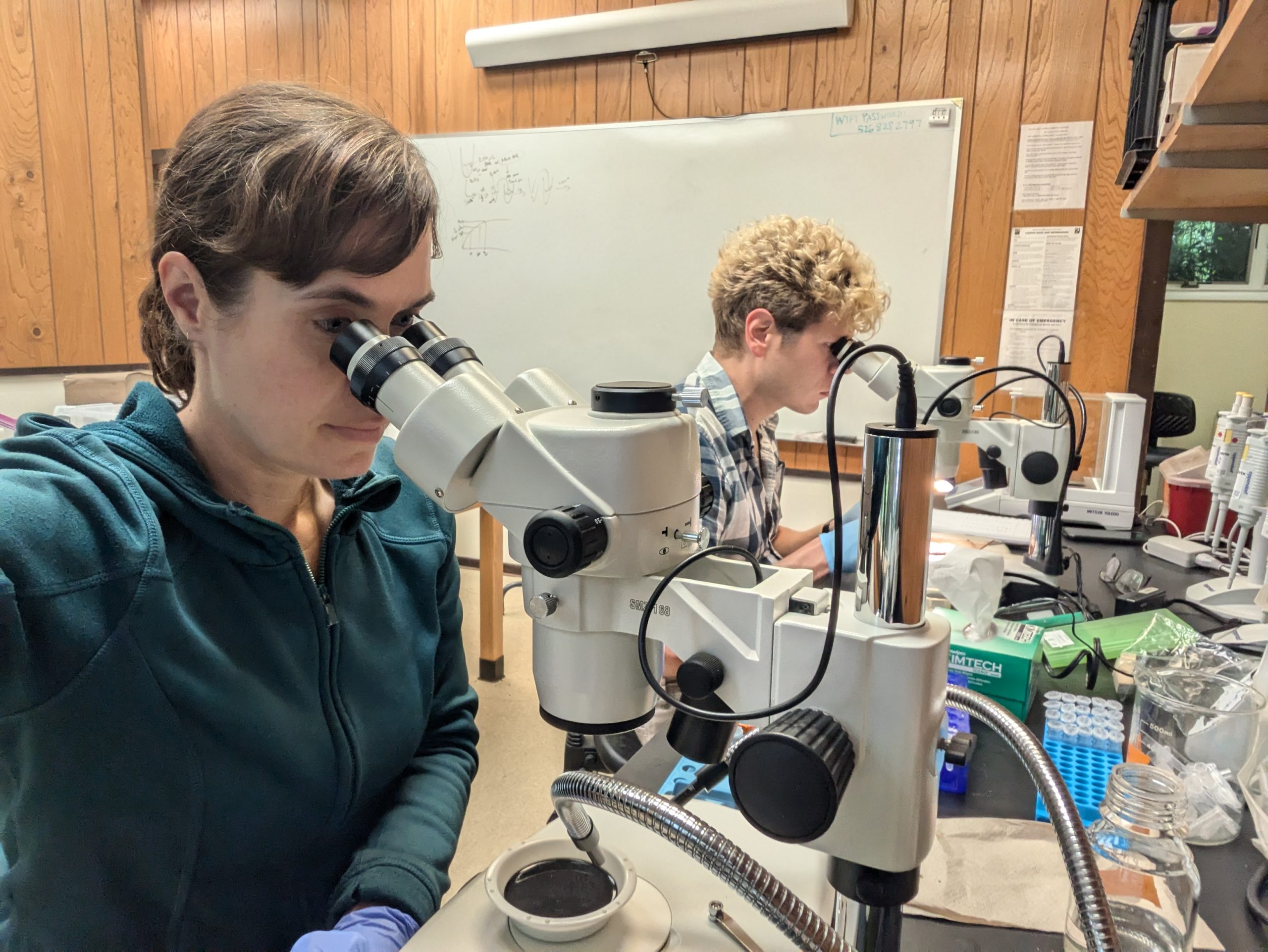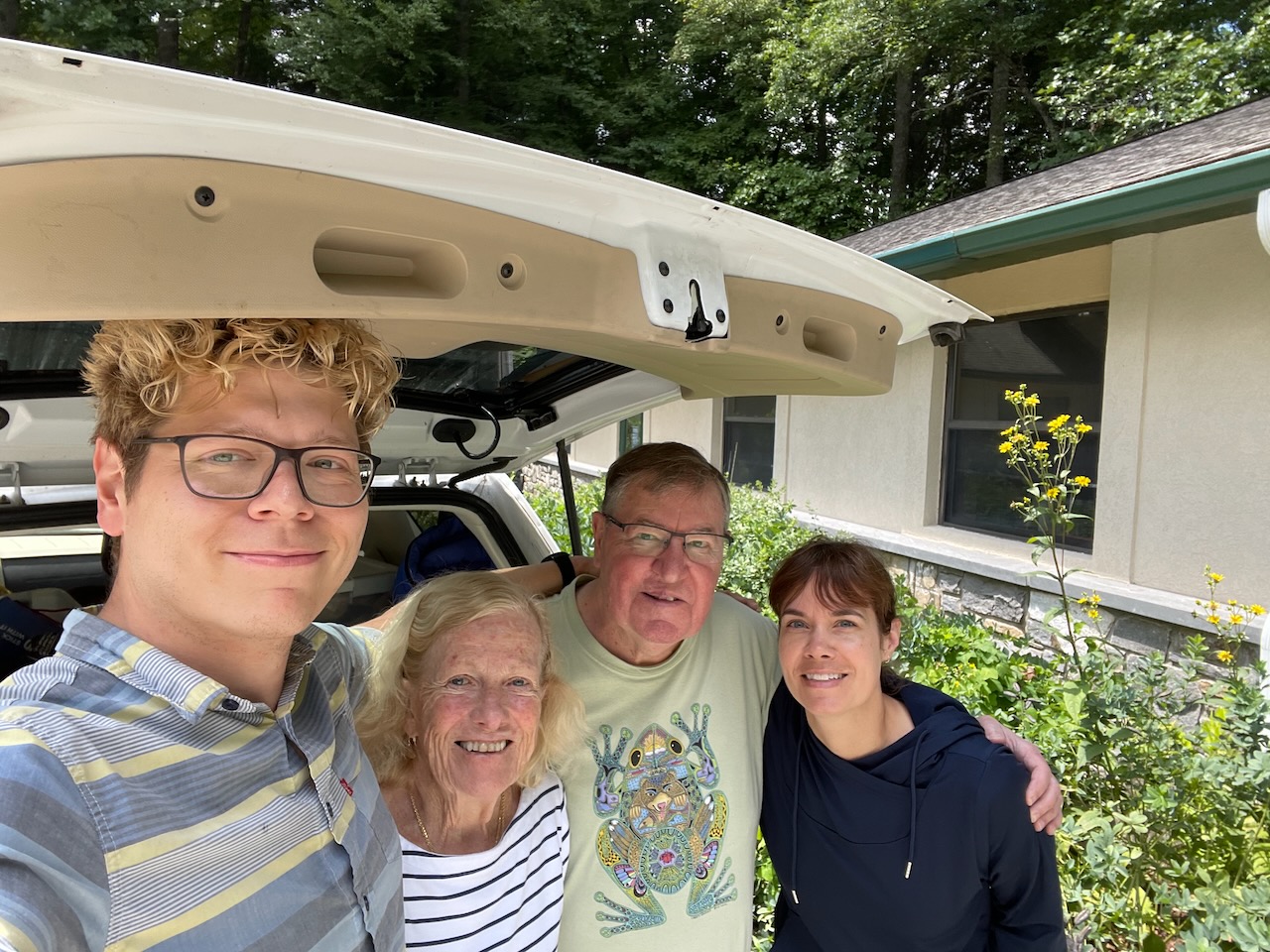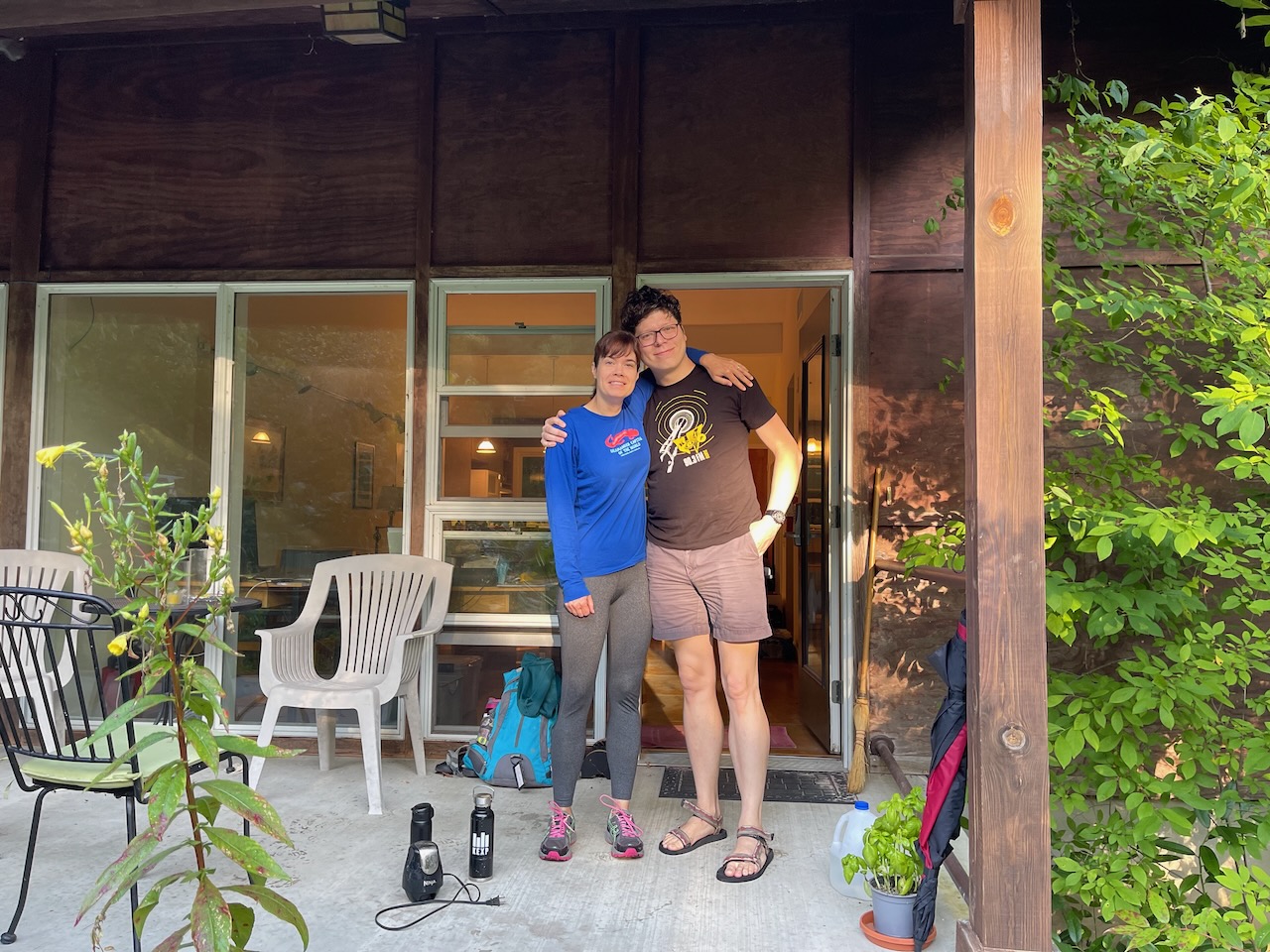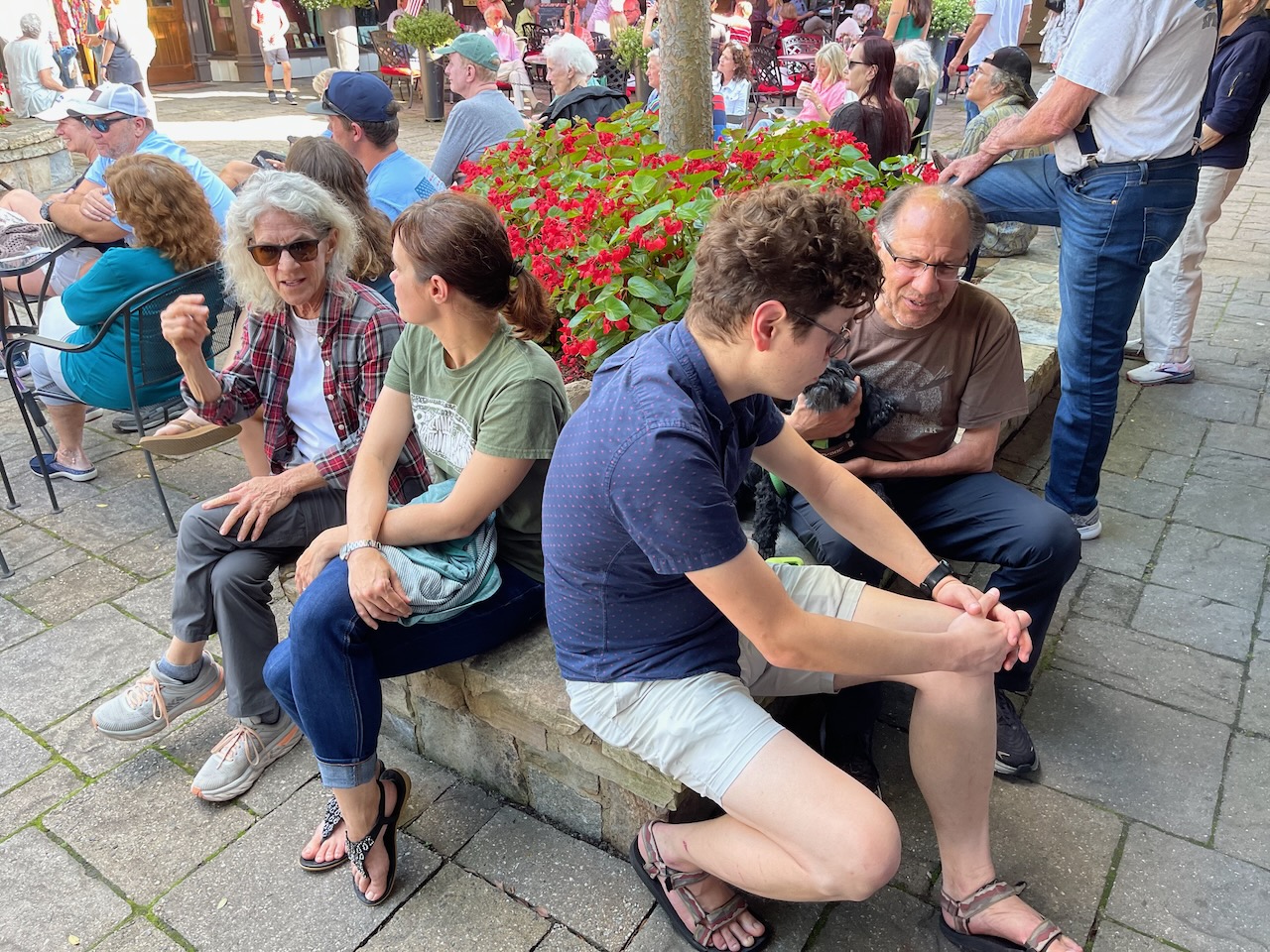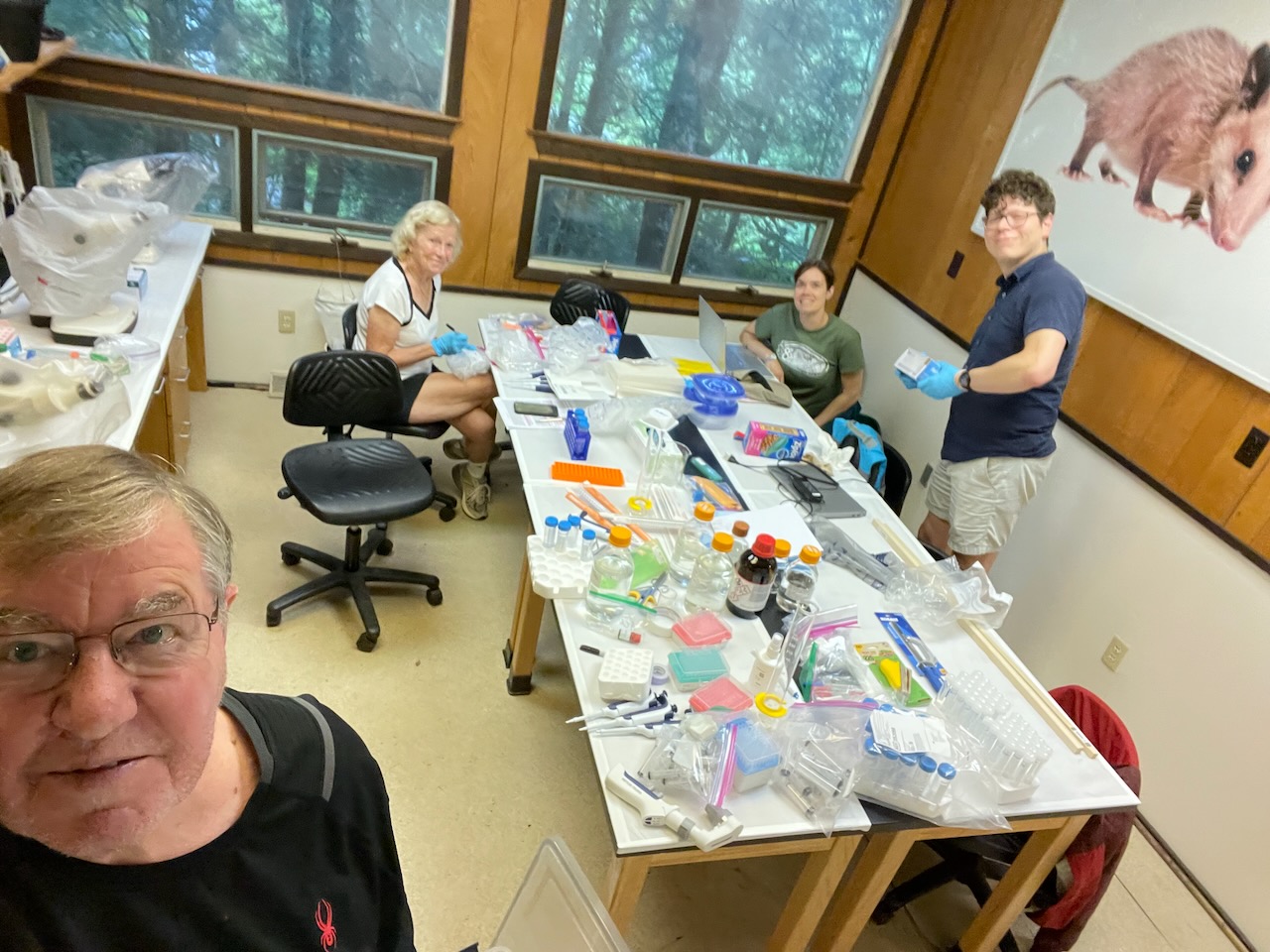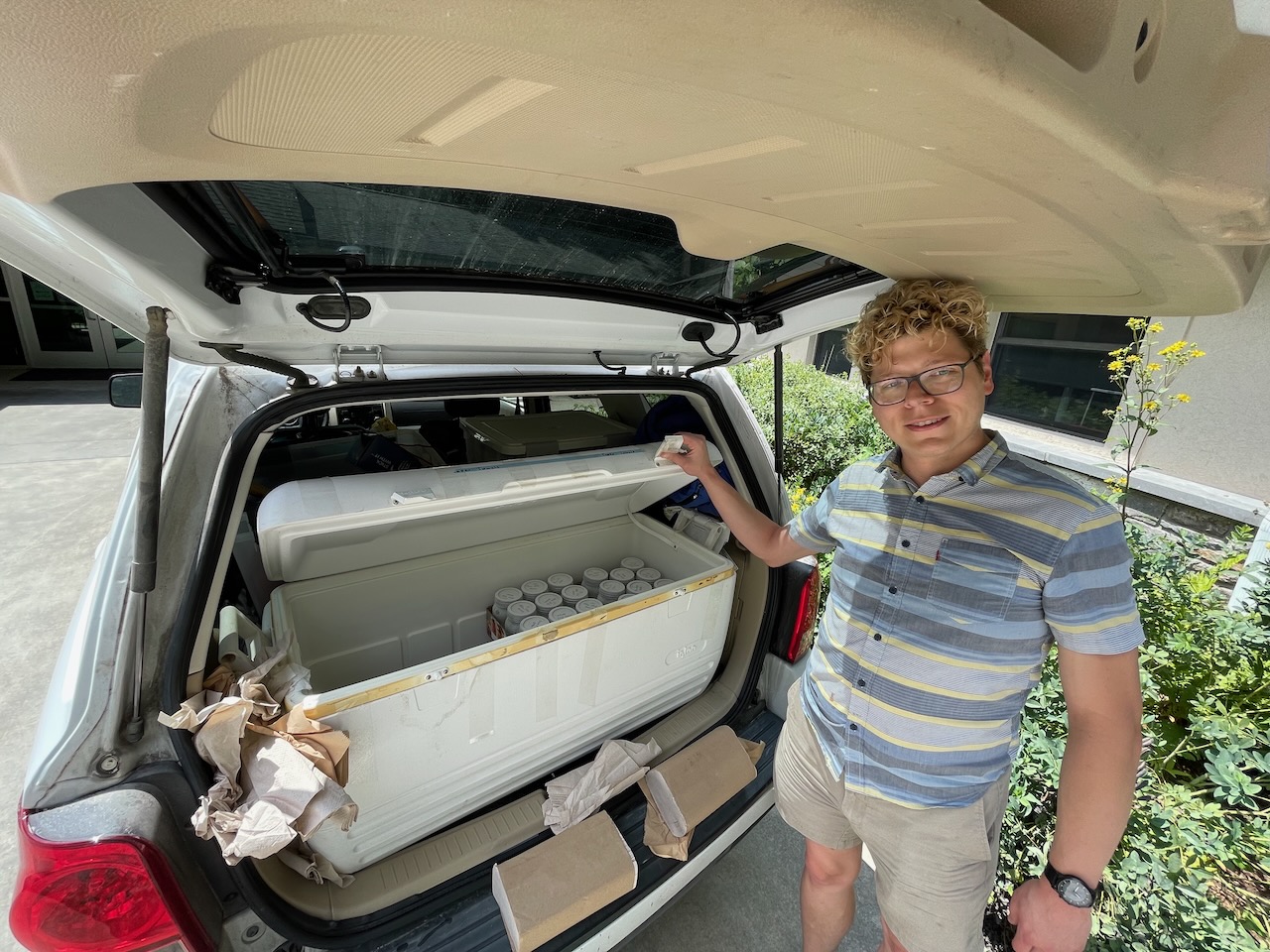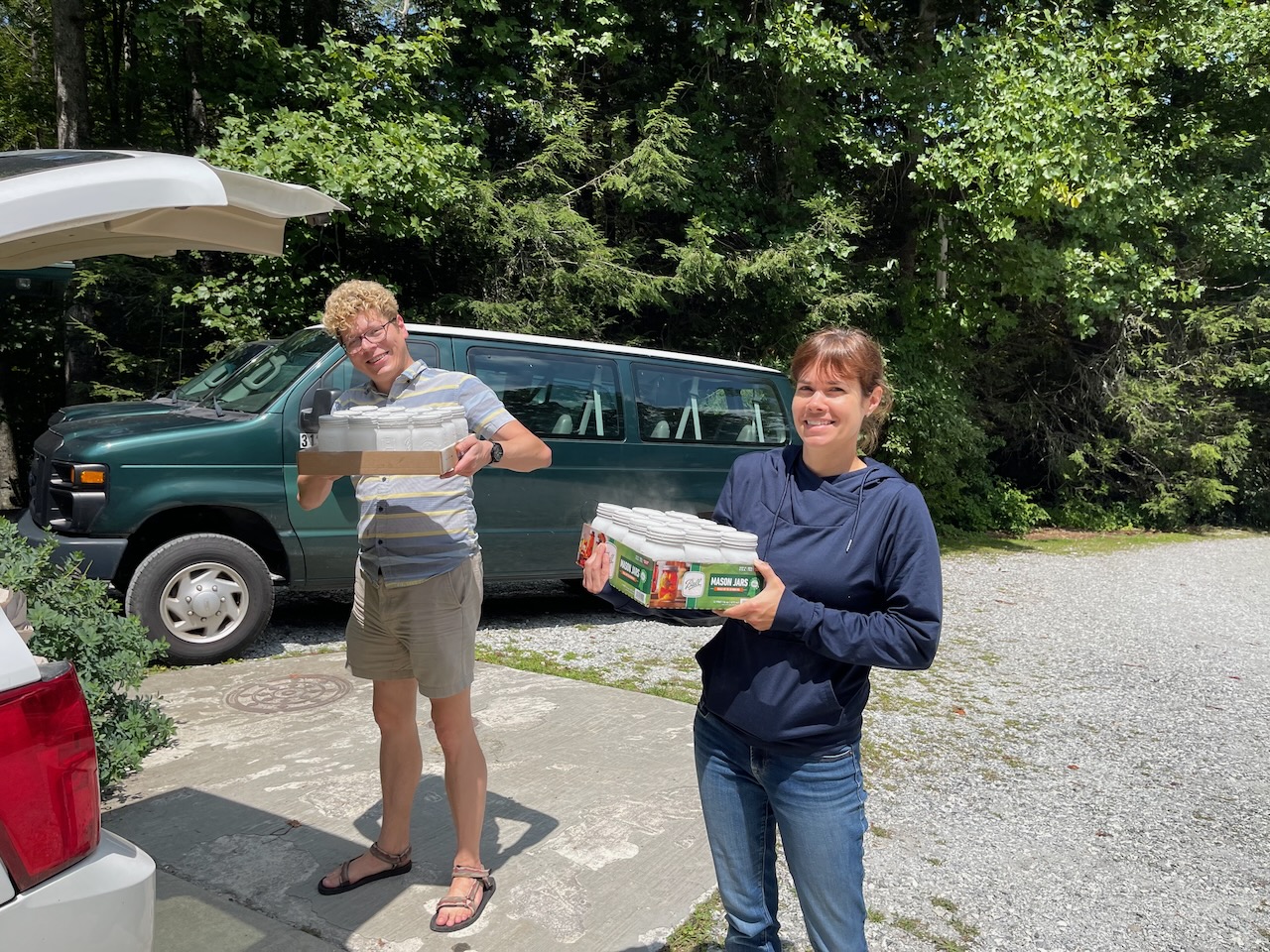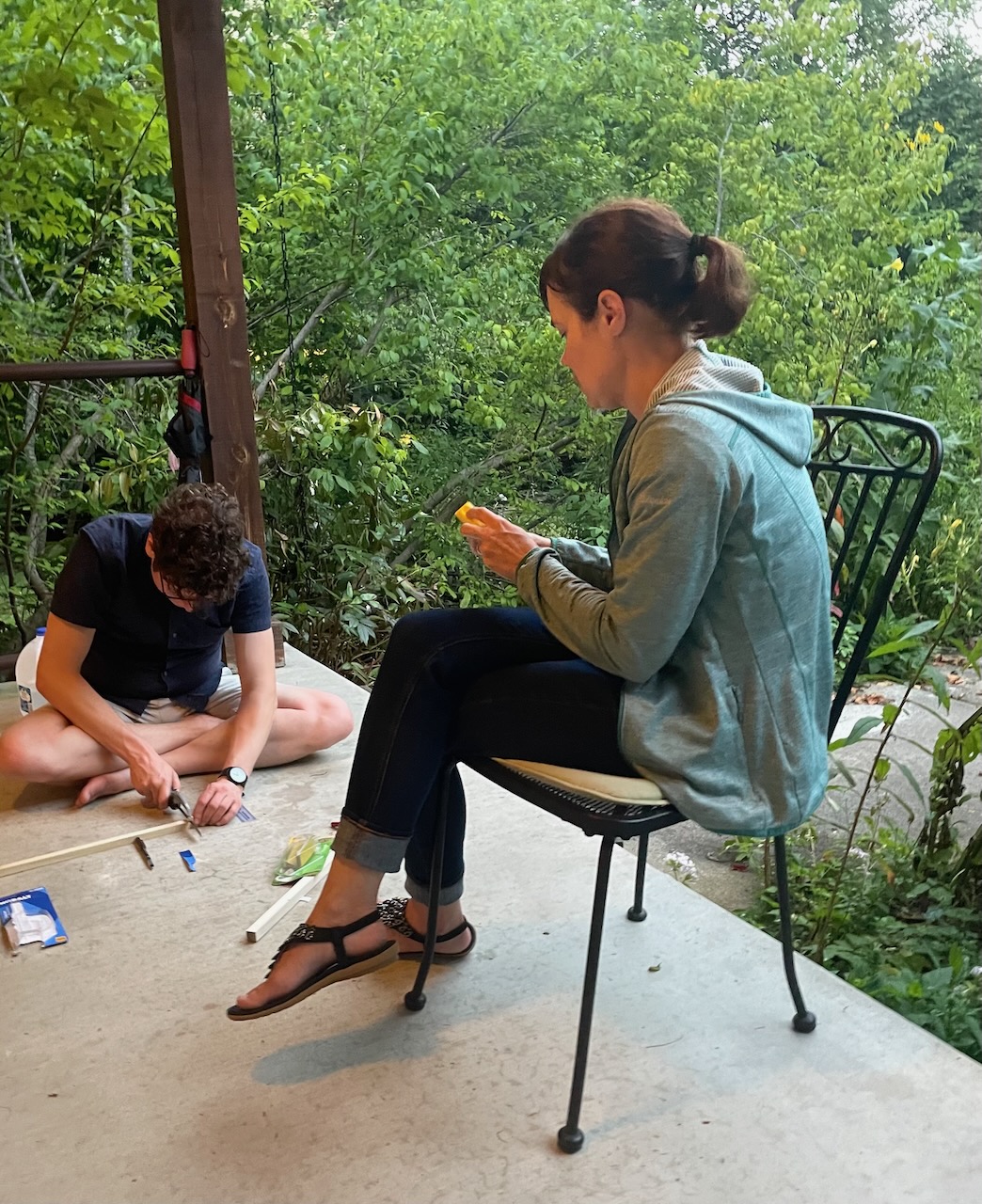HIGHLANDS BIOLOGICAL STATION
Deep Roots, Cold Streams
Join us for a behind-the-scenes look at one of Highlands Biological Station’s longest-running research collaborations. In this 2025 Q&A, Drs. Karen Kiemnec-Tyburczy and Damien Wilburn reflect on their work with plethodontid salamanders—a continuation of decades of groundbreaking research led by Drs. Rick and Pam Feldhoff, among others. From chemical courtship to shifting ecosystems, their story is one of deep scientific curiosity, enduring mentorship, and the remarkable legacy of salamander research rooted here at HBS.
How did your research group first get started at Highlands Biological Station? What inspired the focus on salamanders?
Our work really began in the mid-1970s by Stevan Arnold doing his PhD research at HBS characterizing the behavior of plethodontid salamanders, especially Plethodon shermani (then called P. jordani). Steve’s partner, Lynne Houck, is also an expert in amphibian behavior and the two collaborated closely studying the system through ~2016. In the early 1990s, Lynne recruited two biochemists, Rick and Pam Feldhoff, into the collaborative team studying the pheromones that these salamanders exchange during their courtship and affect their behavior. Hilariously, Lynne and Rick met while sitting next to each other on a flight to Chicago, which Rick likes to retell as Lynne “picking him up on a plane” and spawning an ~25-year collaboration. The plethodontid system provides a powerful model for understanding how animals communicate using chemicals (pheromones) and the molecular mechanisms of olfaction. We (Karen and Damien) were graduate students in Houck/Arnold lab and Feldhoff lab, respectively, and luckily got to spend our summers at HBS getting to participate in this really exciting and interdisciplinary work. It was serendipitous that we started our own research labs at similar times and recently have been able to continue working on the many outstanding questions that remain about these fascinating animals.
What changes or patterns have you observed in salamander populations or ecosystems over the years?
From our observations and those of other salamander researchers who work extensively at HBS (e.g., Grant Connette), salamander sightings are becoming sparser due to erratic weather patterns creating more dry spells that they try to avoid. Multiple forest fires and logging efforts haven’t helped. Disturbingly, we have also recently observed delayed development of pheromone glands in male P. shermani. Using samples collected in 2024, molecular analyses performed by OSU graduate student Paul Nicolosi support that the genetic program of the glands is distorted relative to observations from 2013, with most glands now producing significantly less pheromone. We are still unsure what if any consequences this is having on salamander reproduction, but it is now something we are actively monitoring.
What does HBS mean to you and your team? Any favorite memories or field sites?
Our 2-4 weeks at HBS every summer has always been an annual focal point for our collective research team. The samples collected and experiments performed in that short window are then analyzed throughout the rest of the year, collectively resulting in dozens of manuscripts over the decades. Beyond the external measures, and far more importantly, the station is a remarkably stimulating space. Immersed in so much of the natural biodiversity, living and working among immensely talented scientists from across the country – both within our own collaborative research team and other visitors to the station. I think some of my favorite memories are the random social gatherings in Valentine House – you never knew who you were going to meet in the kitchen, but they were usually interesting and enthusiastic about science, so good foundation for a conversation.
How has your work at HBS contributed to the broader understanding or conservation of salamanders?
Salamanders – especially plethodontid or lungless salamanders common throughout the southeastern Appalachian Mountains – are remarkable animals that have genomes with ~10x more DNA than humans, and we understand quite little about their basic physiology. Our PhD advisors dedicated much of their careers to characterizing the molecular foundations and behavioral consequences of the pheromone courtship system, which remains one of the most tractable experimental models for understanding how pheromones evolve between species. In addition to continuing that work, we are expanding our research to include more layers of their fascinating molecular biology and physiology.
How many students or early-career scientists have been involved with your group’s work at HBS? What legacy do you hope to leave behind?
Steve, Lynne, Rick and Pam collectively trained many PhD and Master’s students who did research at HBS and many undergraduates as well. From Karen’s lab, two graduate students (Emily Gremling and Sun Lanzilli) conducted research at HBS in 2022 and took the plethodontid biology course that spring. From Damien’s lab, one PhD student (Paul Nicolosi) and one undergraduate (Liam Johnson) are currently performing work at HBS this summer, studying different aspects of plethodontid reproduction. Paul is also the recipient of the 2025 Bruce Family Scholarship in Herpetology through the HBS Grant-in-Aid Program. Damien and Karen plan to continue work on eastern salamanders as part of their long-term research goals. We plan to train students to appreciate and understand these animals and hope that some will choose to be the third ‘generation’ of salamander pheromone researchers.
What’s next for your salamander research? Are there any big questions or directions on the horizon?
In addition to studying dysregulation of the pheromone gland in males and how female salamanders perceive the pheromones, we are currently working on sequencing multiple plethodontid genomes to learn more about the genetics and various aspects of their physiology.
What’s the weirdest or most memorable thing that’s happened during your time in the field? And if your team had a mascot (besides a salamander!), what would it be?
One of Karen and Damien’s most memorable moments from graduate school in 2008 was helping Steve film hellbenders in the Davidson River. Karen didn’t do a very good job as a supporting cast member because she couldn’t stop laughing as Steve crawled next to the salamander along the shallow stream bed. You can find it on Steve’s ‘Salamander Courtship’ YouTube channel (https://www.youtube.com/watch?v=_lrZ1xzDW-E), along with others that he filmed in North Carolina over the years.
We can’t think of a single mascot that unites all the diverse personalities in our research group but that will probably be part of our collaborative discussions during this year’s field work!
Special thanks to Dr. Damien Wilburn for sharing his reflections and photos, and to Dr. Rick Feldhoff for contributing additional images. We’re grateful to have them both back on campus this August as their lasting legacy continues to grow at HBS.

